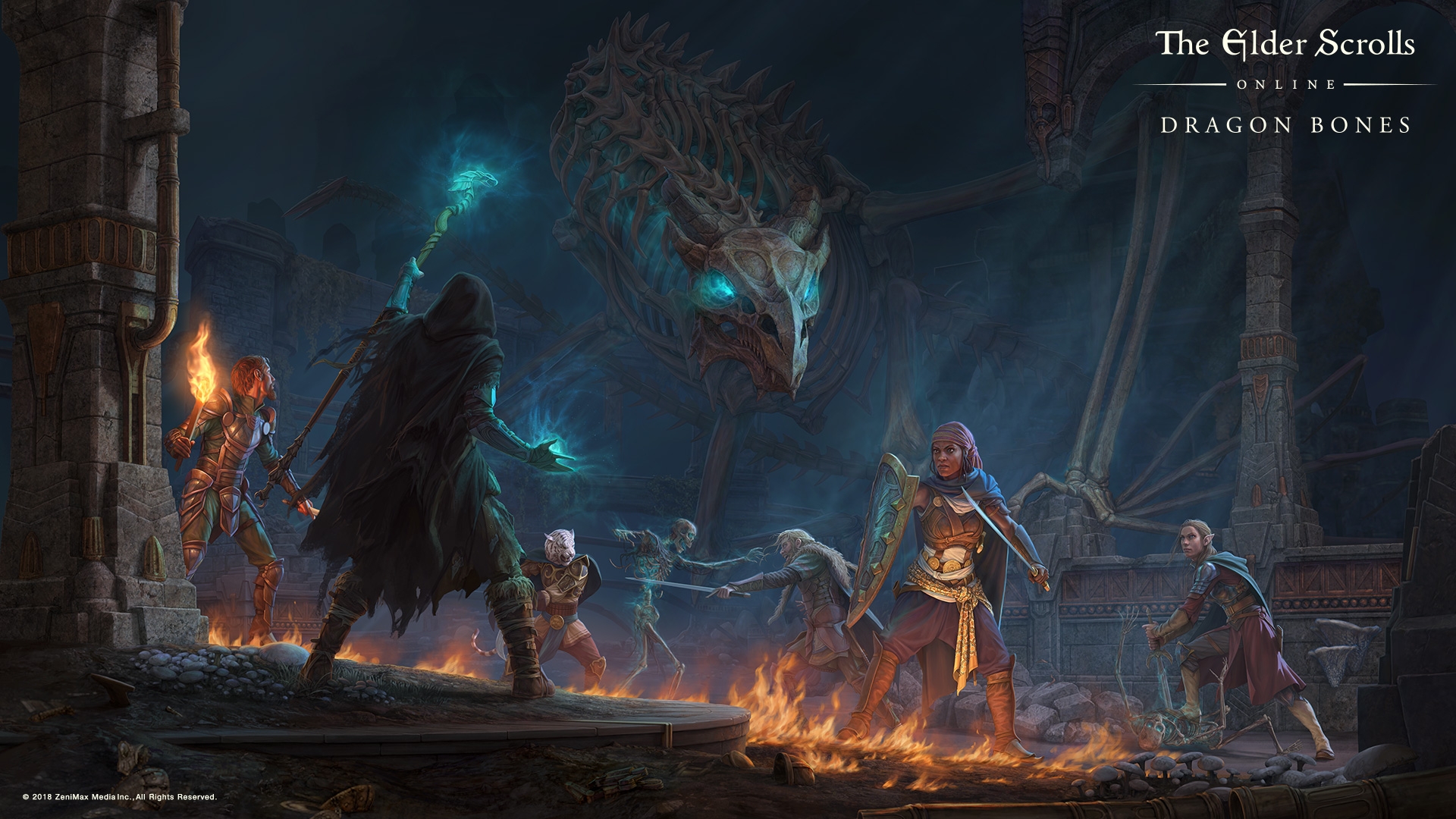Table of Contents
- 1 Introduction
- 2 Part 1 – Before You Begin Your Journey
- 3 ESO Plus
- 4 DLCs
- 5 Part 2 – The Start Of Your Journey
- 6 Which Class to Pick?
- 7 Leveling Up
- 8 Champion Points
- 9 NPC Guilds
- 10 How to Repair Equipment
- 11 Part 3 – Skills
- 12 Skill Points
- 13 How to Level Skills
- 14 Resetting Skills
- 15 Part 4 – Basic Game Mechanics
- 16 Light and Heavy Attacks
- 17 Block
- 18 Interrupting
- 19 Roll Dodge
- 20 Stealth
- 21 Part 5 – Professions, Buffs, Inventory and Mounts
- 22 Professions
- 23 Buffs (Food, Drink and Mundus Stone)
- 24 Inventory
- 25 Mounts
Introduction
Are you looking to get into The Elder Scrolls Online in 2019?
Then you’ve come to the right place!
This guide was made to help you get started on your journey in the game, even if you know nothing about The Elder Scrolls Online.
It is highly recommended to read everything that is here, even before creating your first character, as this guide can answer 90% of doubts new players have.
Part 1 – Before You Begin Your Journey
Before we begin talking gameplay, let’s talk money.
ESO Plus
Although ESO has no monthly fee, it does have something akin to a “VIP membership” where the player can pay a monthly subscription.
This subscription is known as ESO Plus, and players aren’t obligated to purchase it.
Those who own it don’t get stronger or progress faster than other players. The game has no such benefit.
But it does have its advantages, such as access to all DLCs and a monthly reward of Crowns (the official store’s currency).
DLCs
Many players have doubts regarding DLCs.
Do they make a difference in the gameplay experience? Which ones should you buy?
First of all, you can play The Elder Scrolls Online and have a great time without DLCs.
However, certain pieces of equipment for specific combinations and builds that are DLC-exclusive.
But don’t worry about your wallet just yet!
The base game is vibrant, and many of the game’s builds don’t need DLC equipment, and they won’t make you stronger than other players.
ESO has over 300 different sets of equipment; You can explore a bunch of combinations without owning a single DLC.
Should you sign ESO Plus or buy DLCs when you’ve just begun playing?
The answer is: No!
There is no point in starting with a lot of additional content that you might never experience.
You should only buy DLCs that contain equipment or content that you’re confident you need or want.
It’s after you’ve experienced the game and you’re sure you like it and want to keep playing it, that should you put your money on it.
Part 2 – The Start Of Your Journey
Which Class to Pick?
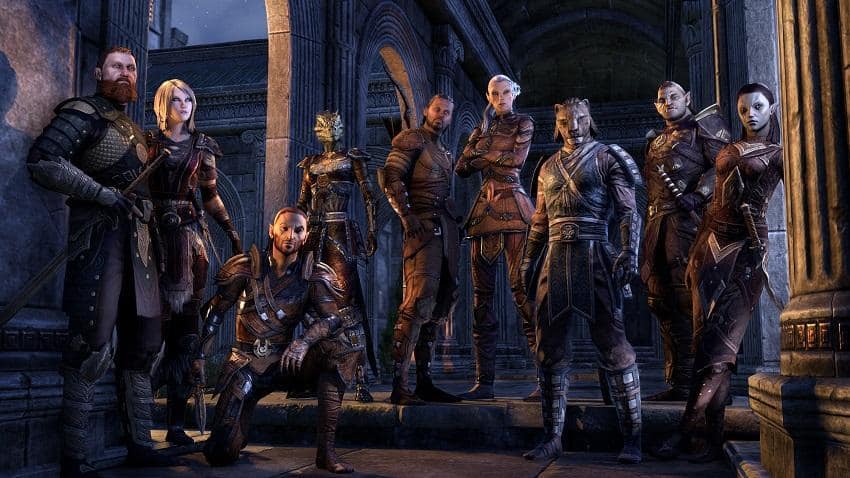
Ahh… the dreaded question.
Is the class I like viable? Is it strong? Can I use X, Y, or Z build on this class?
First of all, every class is viable and has viable builds in every role (Tank, DPS, and Heal).
And secondly, every class has a great variety of what equipment they can use. Weapons and armor aren’t class-locked, meaning you can use any weapon and any armor type with any class!
Of course, some classes will be better than others in specific circumstances.
But you can and should play whatever class you want!
I recommend you choose to play with what you have the most fun with because the reality is that you can reach the endgame content with any class.
If you’re not familiar with the classes, here’s a short description of each one, see if you find anything that catches your attention:
Dragonknight – As the class’ name implies, the Dragonknight is a ferocious warrior that uses destructive fire magic to eliminate its enemies.

Nightblade – The Nightblade is the traditional Assassin or Rogue. Deadly and agile individuals that slip in and out of the shadows to strike enemies.
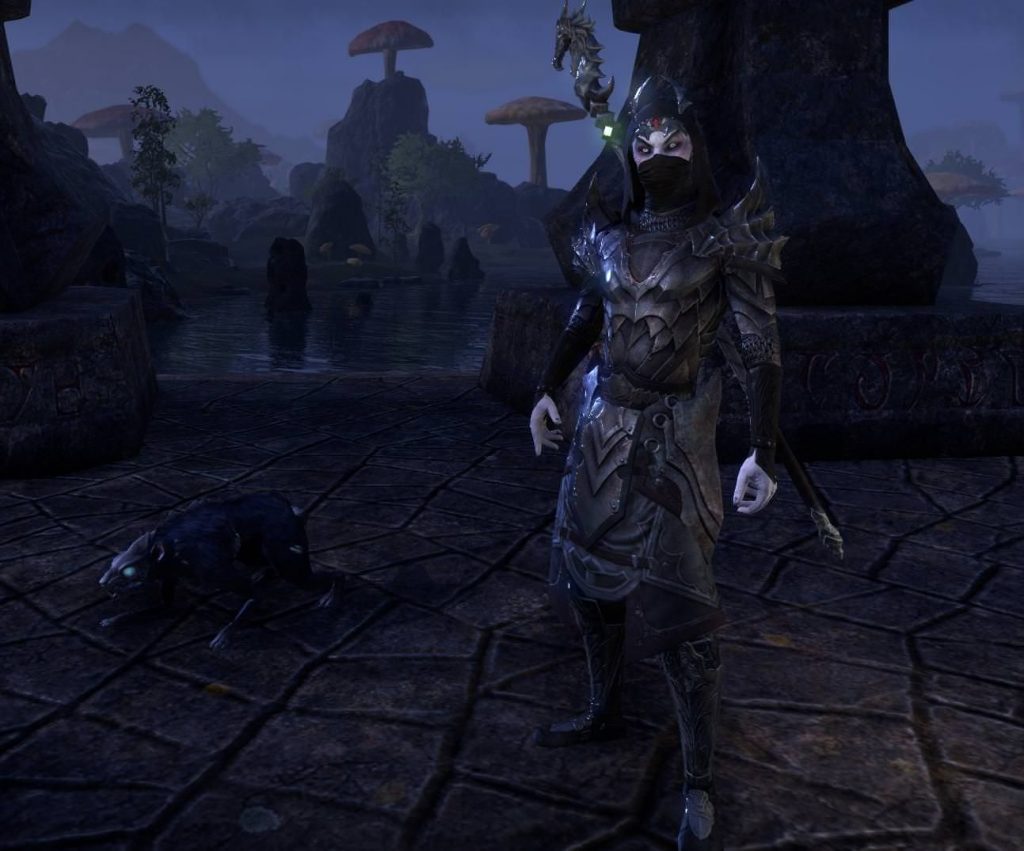
Sorcerer – The Masters of summoning and weather elements. They’re able to call forth powerful creatures to fight for them, as well as control the power of storms.
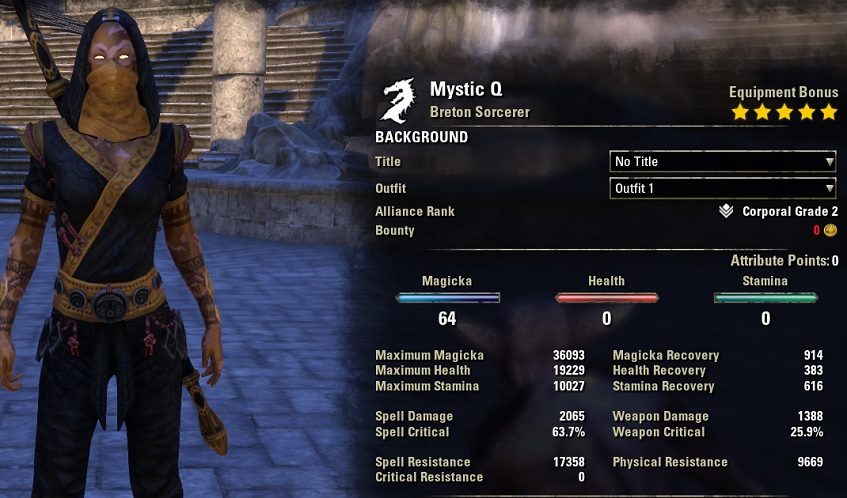
Templar – Proficient in controlling light and the power of the sun, these knights can heal your teammates as well as they can dish out the wrath of the sun upon their enemies.
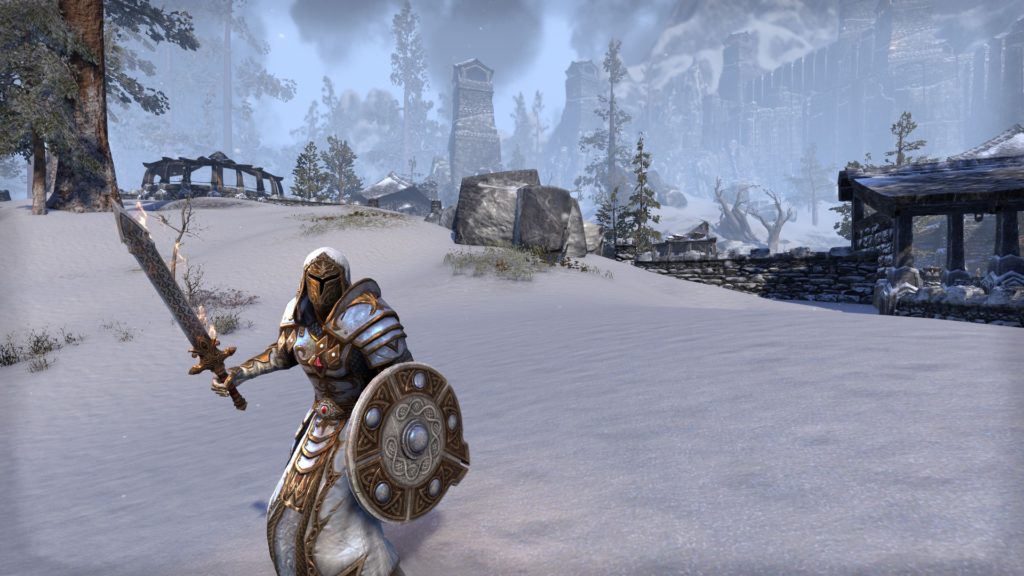
Warden (Morrowind DLC) – Connected to nature and the wilds, Wardens can summon powerful animals to aid them, use nature’s power to heal allies, or freeze enemies to the bone with ice skills.

Necromancer (Elsweyr DLC) – These commanders of the dead can suck the life out of enemies, animate powerful undead minions, and even use bone and flesh to empower themselves.

Leveling Up
There are several ways to level a character. You can gain experience through quests, leveling professions, discovering locations, accomplishing achievements, grinding or doing dungeons.
It’s recommended that you do the game’s quests because they give you a natural, easy-to-follow progression, on top of achievements that reward you with new titles and colors to dye your equipment.
But if you don’t like the questing route, you can go through a somewhat faster but monotonous way: by griding.
By increasing your level, you will gain Attribute not only Points, which can be spent on Health, Magicka, and Stamina, but also Skill Points that can be spent on Skill Lines.
The maximum level for characters is 50.
But leveling progression doesn’t stop at level 50!
Champion Points
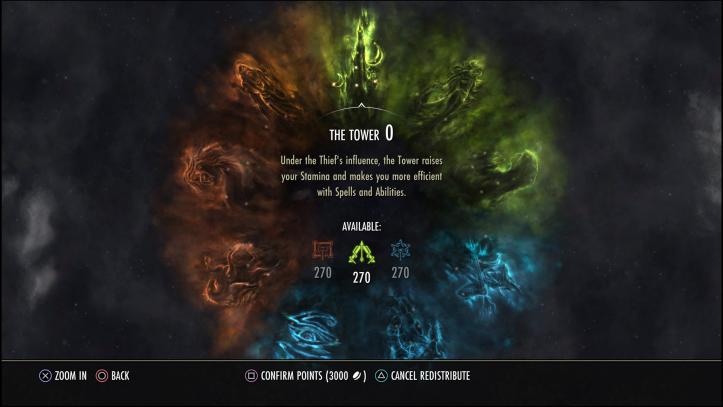
Champion Points are particular levels unlocked after your first character reaches level 50, and they work in the same way as usual levels.
Champion Points increase your character’s Health, Magicka and Stamina
And they have a unique advantage: they’re tied to the account and aren’t exclusive to a single character.
For example: once you have achieved 100 points for a single character, all of your other characters will have also have 100 points to use.
Another essential thing to note is that the maximum equipment level of the game is CP160 (160 champion points), which means that getting to CP160 should be one of your progression goals.
CP has two different maximum levels.
The first is at 810, where every point you earn after 810 cannot be spent on new Champion Point Passives.
The second is at 3600 points. After 3600, you can’t gain any more Champion Points or experience.
NPC Guilds
Players can join various NPC Guilds, regardless of their Alliance.
NPC Guilds include the Mage’s Guild, the Fighter’s Guild, and the Undaunted. Three more guilds are present through DLCS: the Thieves Guild, the Dark Brotherhood, and the Psijic Order.
An essential thing you should do is become a member of all of the three non-DLC guilds (Mage’s Guild, Fighter’s Guild, and the Undaunted) as soon as you can by getting an invitation from a specific NPC.
The NPC that gives you the invitation is different for each Alliance and for each guild. You should also try to join the DLC Guilds (Thieves Guild, Dark Brotherhood, and Psijic Order), although joining those guilds can be a little trickier.
The reason for joining Guilds is that each of them will give you a unique line of skills, as well as several quests.
Once you join a guild, you immediately unlock their skill line. As you increase reputation with the specific guild, your skill line will progress.
Each guild will require individual tasks and quests to be accomplished to develop their skill lines further.
For example, the Fighter’s Guild will ask you to kill Undead and Daedras, while the Mage’s Guild will ask you to collect different lore books spread throughout the world.
How to Repair Equipment
You can repair your armor at any game vendor, or by buying and using repair kits.

Weapons, on the other hand, don’t break.
Enchanted weapons do need to be recharged, though.
To recharge a weapon, you will need a Soul Gem. Then you need to double-click on the Soul Gem, and the energy will transfer to the weapon.
You can also use Varla Stones, which you find in dungeons, and they fully recharge all items in your inventory, but be cautious of using them, because they are very rare.
Part 3 – Skills
Skill Points
To unlock skills, you need to get Skill Points.
You can earn them by leveling up, completing specific quests, and by picking up skyshards, which are scattered all over Tamriel. Once you collect three skyshard fragments, you will gain one skill point.
How to Level Skills
Skills level up whenever you have them on your skill bar.
You don’t even need to be able to use it.
For instance, if you have a Two-Handed Sword equipped, you can still level up your Bow skill, as long as it’s on your skill bar.
Skill lines level up differently from range to line.
For example, the guild mentioned above skill lines require you to increase your guild’s reputation through quests and other tasks
While weapon and armor skill lines level up when you have the particular item equipped while leveling. For example, having a bow equipped and using it during leveling will progress your bow skills line.
Resetting Skills
It’s common to be afraid of misallocating skill points in the character, but you don’t have to worry. ESO has multiple shrines called Rededication Shrines, where you can reset skill points AND attributes. These are some cities where you can find a shrine:
• In Wayrest, Stormhaven
• Elden Root, Grahtwood
• And Mournhold, Deshaan
Part 4 – Basic Game Mechanics
Light and Heavy Attacks
Light attacks do a lot of damage and should be used a lot.
Besides, they activate the enchantment of your weapon, so they should generally be used in-between skills.
Heavy Attacks also do a good amount of damage, but the real benefit of using it is that it restores your character’s resource (Magicka if the attack was with a Staff, and Stamina if the attack didn’t come from a Staff).
Light and Heavy Attacks are “free”; they don’t cost Stamina or Magicka.
Heavy attacks do cost time, though, as they need to be charged up.
Block
Blocking is the most critical mechanism to mitigate the damage received. When you are blocking, you suffer much less damage than you would typically receive, but this mechanism drains the player’s Stamina, and while you are blocking, you won’t regenerate Stamina. Try to use this mechanic only when necessary.
Interrupting
When fighting an enemy that is channeling an attack or skill, you can stop or interrupt their attack or skill, as long as you’re in melee. When you suspend an enemy, they can become stunned or unbalanced, and their attack or skill won’t be activated. This mechanic is essential to prevent the enemy from delivering a mighty blow or healing at a crucial time, interrupting costs Stamina.
Roll Dodge
You can use this mechanic to avoid damaging abilities from enemies, thus not receiving any damage when rolling. This action can be used to escape from Crowd Control (like Stuns and Snares). Roll dodge uses up Stamina.
Stealth
You can move without alarming enemies when you’re in stealth mode. If you make a physical attack from stealth, it will always be a critical hit, and you will immediately stop being in stealth. Your Stamina will be reduced for every second you remain in stealth, and you will move slower while during it.
Part 5 – Professions, Buffs, Inventory and Mounts
Professions
The professions at ESO are vital, and you can level as many as you like. For this, it is recommended to deconstruct most items you find and will not use; this process can be done when interacting with the profession station; more details are given in the Professions Guide. You can also access a table with the number of materials needed to produce items of different levels at this link.
The professions of The Elder Scrolls Online are:
- Blacksmithing
- Woodworking
- Clothing
- Enchanting
- Provisioning
- Alchemy
- Jewelcrafting
Each profession is leveled up differently.
Blacksmithing, Woodworking, Tailoring, and Jewelcrafting are leveled up by creating and deconstructing equipment.
Enchanting is leveled with the creation and deconstruction of glyphs.
Provisioning is leveled by cooking food and making drinks.
Alchemy levels by creating potions and poisons.
Buffs (Food, Drink and Mundus Stone)
Food and drinks give you significant buffs, increasing your maximum resources and their recovery.
Foods can generally increase maximum Health, Stamina, and Magicka.
While drinks generally increase the recovery of these resources. You can only use one food or drink at a time.
Another necessary buff is the iconic Stone Mundus. They are altars that invoke the power of a specific constellation, granting a permanent buff to the player.
You’ll encounter many of these stones in your adventures, and although you can have only one Stone Mundus buff active at a time, you can change it to a different stone if you want to.
Inventory
All items you pick up will be stored in your inventory. At first, you will have 60 slots in your inventory, but that number can be increased to a maximum of 140. Each time you purchase an inventory upgrade, the cost for the next upgrade will increase.
The bank is another way to store items, and it has plenty of space to offer, so be sure to put your treasures there to leave plenty of room for new loot in your inventory. You can also upgrade the bank, but it is quite expensive. The bank is shared with your entire account, meaning you can exchange items and gold between your characters.
Mounts
Mounts can be bought and used at any character level. You can purchase multiple mounts, but you can have only one active mount at a time, which you can change whenever you want.
Every character has three different Riding Skills that affect every mount the character uses: Stamina, Speed, and Storage capacity.
You can progress your Riding Skill every 20 hours, so be sure to visit a Stable and level an attribute point every day.
As stated before, the total inventory is 140 slots. However, you can increase your inventory space even further by using mounts, which can add up to an extra 60 slots to your inventory.
Sources
https://elderscrollsonline.wiki.fextralife.com/Elder+Scrolls+Online+Wiki

